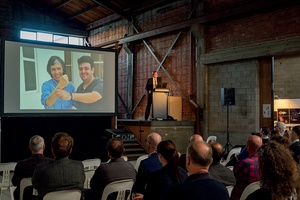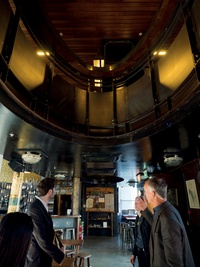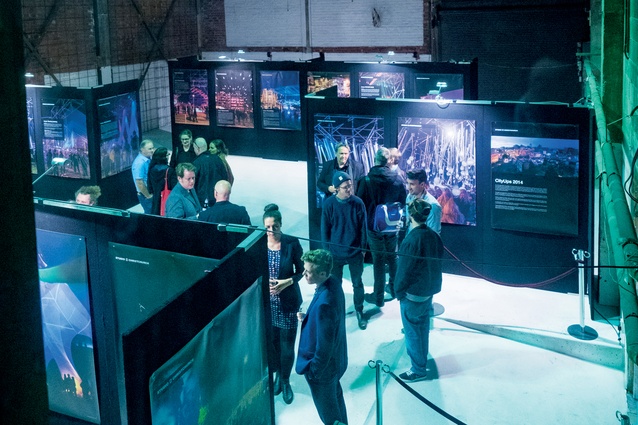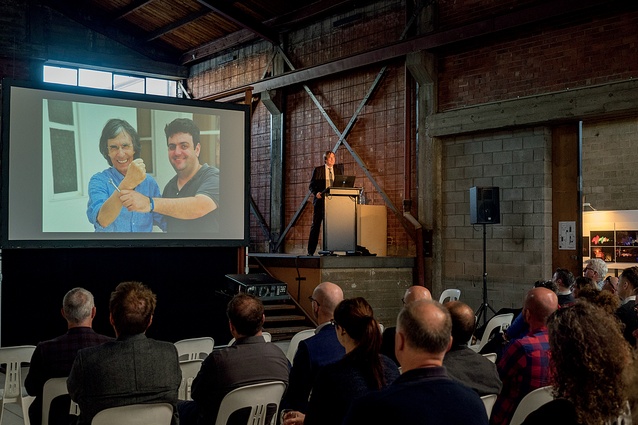Applied collaborations
It was a short conference with a long name that opened with a closing. Over two days in early October last year, the 8th International Conference and Exhibition of the Association of Architecture Schools of Australasia took place in Christchurch in October last year with the theme ‘Applied Collaborations’.
The biennial conference is designed to bring heads of school, academics and interested parties together to meet and gather around a topic of particular interest. This was its first iteration in New Zealand. It was an interesting decision to locate the conference in the major New Zealand city without an accredited architecture school but, given the unique state of the city and the scale of collaborative projects between schools of architecture and students in Christchurch over the last five years, it was an apt choice.
The conference opened with an exhibition to celebrate and officially close the collaborative project ‘Studio Christchurch’, which was formed in response to the ’quakes. The exhibition consisted of a stunning collection of work from students from CPIT and Lincoln University in Canterbury, Victoria University of Wellington, and AUT, The University of Auckland and Unitec in Auckland. Prominent was a series of large photographs featuring the large-scale installations designed and constructed by students as part of the Festivals of Transitional Architecture (FESTA) between 2012 and 2014.

I was involved with some of this work and it was with some sadness that I realised that this particular series of collaborations and projects has shifted from something unfolding in front of us to a reflection on an important and historical moment. Thousands of people worked to produce the five years of Studio Christchurch but particular credit should be given to Uwe Rieger, Camia Young and Erica Austin.
The opening night featured the keynote lecture by the Professor Colin Fournier (who commented that he was “staggered by the quality of the exhibition”). Fournier may have disappointed some with this talk by avoiding the famous projects on which he’s worked, including Parc de la Villette with Bernard Tschumi and Kunsthaus Graz with Sir Peter Cook, but, in his unfalteringly polite manner, he instead introduced a number of definitions and understandings of collaboration that would continue as themes through the next two days of lectures.
He suggested that “all architecture was collaboration” but worked to expand the definition of collaboration from the foundational idea of being something that happens between humans to include work with other disciplines, different kinds of production, interactions with users, and designing with tools and technologies. Fournier continued to probe gently and to praise the presentations during the conference, acting as an effective generator of narrative.
The conference felt small but this gave it a sense of collegiality and familiarity that engendered good conversations and lively questions at the end of each session. Over two days, 30 or so short presentations were made. Two themes emerged that I thought were of particular interest.
Many of the presentations reflected on particular forms of design studio that involved students working with real-world projects through design and/or construction. This suggests that the traditional design studio, which, requires students to respond to fictitious scenarios framed by the tutors – to develop certain sets of skills and competencies – is being challenged and expanded to include a number of other more challenging and collaborative modes.

In Wellington, Andrew Charleson and Mark Southcombe have worked with hundreds of students over a number of years to address the critical problem of how to upgrade structurally the rich building stock of the Cuba Street area, which has little access to capital, while addressing its complex heritage requirements and vibrant culture. Many of the presentations offered different versions of this same idea of using real-world issues and problems to generate research and educational opportunities for students.
RMIT’s Vivian Mitsogianni presented a studio project in which students worked on developing ‘new learning environments’. Critical to this process-based approach to teaching is the strong belief that research is categorically different from practice (albeit interlinked). This enables RMIT to position the student work as research proper that supports and adds to the practice work of the architects. Mitaogianni presented the surprising-yet-rigorous corresponding position that, when students work for practices, they require full compensation for their skills and time, not ‘student rates.’
The tension between practice and research – resolved in the RMIT model – was articulated by other academics who practise (or designers that research). Michael Davis from The University of Auckland commented he felt that often in New Zealand this cross-over was viewed as a problem or threat instead of as a productive and critical form of dialogue.
I agree this is a significant problem in New Zealand, and conferences like this one offer very useful opportunities to learn from our colleagues over the ditch, who, in this area, illustrate a far more sophisticated and nuanced approach that continues to pay dividends in their education of designers and the improved research potential this offers the built environment at large.
These are just a couple of the many themes that developed over the two days during this small, at times slightly odd, but ultimately engaging and fruitful conference on collaboration.












